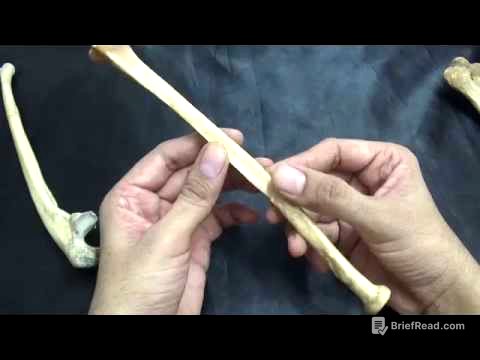TLDR;
This video introduces structural biochemistry, focusing on carbohydrates (or glycines). It covers the classification of glycines into oses (simple sugars) and osides (which break down into multiple sugar molecules upon hydrolysis). The video further differentiates between holosides and heterosides, and oligosaccharides and polysaccharides, based on their composition and the number of sugar units they contain. It also explains the general formula of simple sugars, their reducing functions (aldehyde or ketone groups), and the presence of alcohol functions. Finally, it classifies sugars based on the number of carbon atoms and the type of reducing function they possess, using prefixes like aldo-, keto-, tri-, tetra-, penta-, and hexa- to denote these characteristics.
- Glycines are classified into oses (simple sugars) and osides (complex sugars).
- Osides can be further divided into holosides (yielding only sugars upon hydrolysis) and heterosides (yielding sugars and non-sugar compounds).
- Simple sugars have a general formula of CnH2nOn, with n ≥ 3, and contain either an aldehyde or a ketone group, along with alcohol functions.
- Sugars are classified based on the number of carbon atoms (triose, tetrose, pentose, hexose) and the type of reducing function (aldose or ketose).
Introduction to Carbohydrates [0:00]
The video starts a new course on structural biochemistry, beginning with a chapter on carbohydrates, also known as glycines. A preliminary definition of carbohydrates is provided, setting the stage for a more detailed exploration of their classification and properties.
Classification of Glycines [0:23]
Glycines are divided into two main groups: oses and osides. Oses, also known as simple sugars or monosaccharides, cannot be broken down further into simpler molecules. Osides, on the other hand, can be hydrolyzed to yield multiple sugar molecules. Osides are further classified into holosides, which yield only sugar molecules upon hydrolysis, and heterosides, which yield both sugar and non-sugar compounds (aglycones) like proteins or lipids. Examples of heterosides include compounds that, when hydrolyzed, produce a combination of saccharides and non-glycemic substances.
Oligosaccharides vs. Polysaccharides [2:35]
Osides are further categorized into oligosaccharides and polysaccharides. Oligosaccharides contain fewer than 10 sugar units, while polysaccharides contain 10 or more. This numerical distinction is the key difference between these two types of complex carbohydrates.
General Formula of Simple Sugars [3:38]
The general formula for simple sugars is CnH2nOn, where n is greater than or equal to 3. This means that a sugar molecule must have at least three carbon atoms. Simple sugars also contain a reducing function, which is either an aldehyde or a ketone group, and at least one primary or secondary alcohol function. Examples include glyceraldehyde (an aldose) and dihydroxyacetone (a ketose), which are the simplest sugars with three carbon atoms.
Examples of Cyclic Sugar Molecules [6:38]
Examples of cyclic sugar molecules are given, including D-glucose (an aldohexose) and D-fructose (a ketohexose). These examples illustrate the presence of aldehyde or ketone functions, along with multiple alcohol functions, in sugar molecules. The "D" designation is mentioned, but its explanation is deferred to a later point in the course.
Classification Based on Carbon Atoms and Reducing Function [8:26]
Sugars are classified based on the number of carbon atoms they contain and the type of reducing function they possess. If a sugar has three carbon atoms, it is called a triose; four, a tetrose; five, a pentose; and six, a hexose. If the reducing function is an aldehyde, the sugar is called an aldose; if it is a ketone, it is called a ketose. Combining these classifications, a sugar with three carbon atoms and an aldehyde function is called an aldotriose, while one with three carbon atoms and a ketone function is called a ketotriose. Similarly, sugars with four, five, and six carbon atoms are named using the prefixes tetra-, penta-, and hexa-, respectively, in combination with aldo- or keto- to indicate the reducing function.









